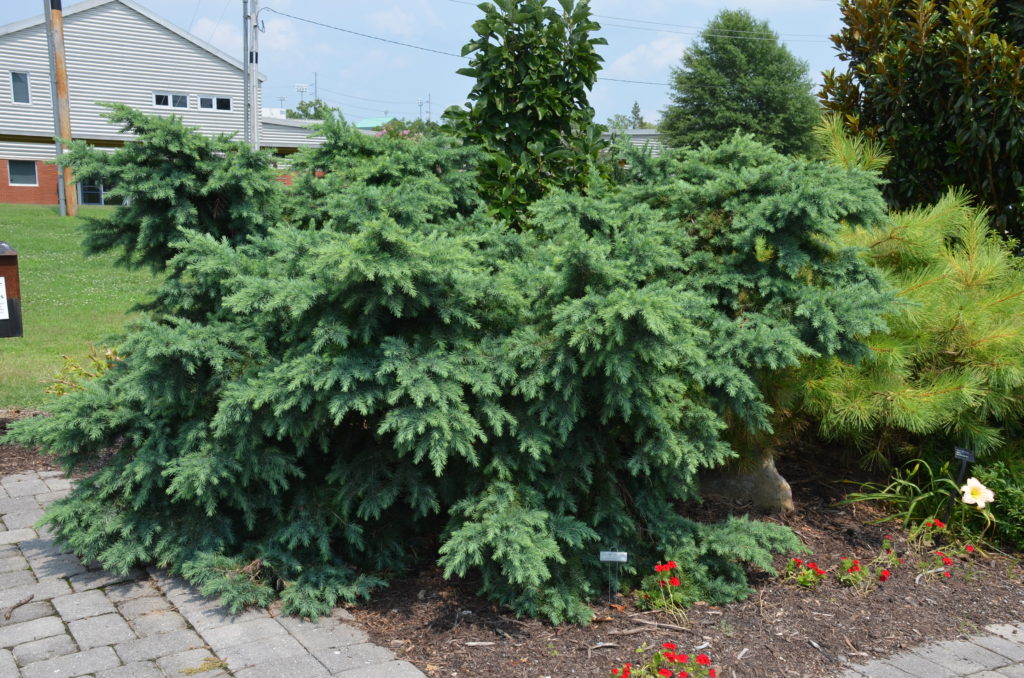Deodar Cypress

Deodar cedar (Cedrus deodara) on East TN State University Campus, Johnson City, TN
Himalayan cedar (Cedrus deodara), aka Deodar Cedar, is indigenous from northern India, east to Nepal, and northward through Pakistan and Afghanistan (USDA hardiness zones (6b)7-10). In the U.S., this evergreen conifer grows 60-70 feet high and 40 feet wide in 50 years. It offers year-round interest by way of its lovely pyramidal form and pendulous branching habit.
Deodar cedar is an excellent specimen tree. You may opt to mass several for privacy screening or a windbreak around your property. Create a unique focal point by clustering 3-5 trees together. Plant these long–lived evergreens for multi-generations to enjoy.
Site selection is most important. Deodars prefer mostly sunny sites and set in moist, well-drained soils. Two-year established trees are drought tolerant. Relatively free from pest and disease troubles, once planted, deodars will provide maintenance-free beauty.
Elegant weeping branches dip downward to the ground and then sweep upward. The older 2- and 3- year old needles drop in spring, just as new buds emerge to provide a soft green look. Male trees produce catkins that disperse copious amounts of pollen in early spring. Female trees develop 3-5 inch egg-shaped cones.
Weatherwise, deodars earn a reputation as finicky trees in the mid-South (Tennessee, Kentucky and Virginia). Young trees are more susceptible to cold than older stock. In a good soil young trees and shrubs grow off quickly, often achieving two feet of growth a year. If the tops of trees die back, winter freeze injury may be the problem.
Winter hardy tree forms include ‘Shalimar’, a selection made in the Kashmiri region of India and ‘Kashmir’. Many shrub forms are also available such as:
‘Feelin’ Blue’ – low spreading, mounding, space saving form; long, thick bluish tinted needles that retain their color into late summer; grows 1 to 2 feet tall in 10 years. ‘Glacier Blue’ -moderate growing shrub form with long blue-green foliage that grows 8-10 feet tall within 20 years.


 Posted in
Posted in 
